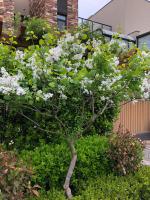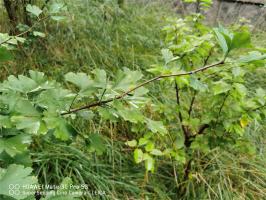What Tree Planting Zone is MN?
If you’re considering planting trees on your property in Minnesota, it’s important to know what tree planting zone you’re in. The planting zone can impact the type of trees that will thrive on your property, as well as the timing of planting and maintenance. So, what tree planting zone is MN?
Understanding Plant Hardiness Zones
The United States Department of Agriculture (USDA) developed a Plant Hardiness Zone Map to help gardeners and horticulturalists select plants that are most likely to survive in their specific area. The map is based on the average annual extreme minimum temperature over a 30-year period.
Minnesota has five different planting zones, which can vary depending on the region. The northernmost parts of the state, for example, are in Zone 2, while the southernmost areas are in Zone 5. The majority of Minnesota falls in Zones 3 and 4.
What Trees Thrive in Minnesota?
Now that you know what planting zone you’re in, it’s important to select trees that will thrive in that specific zone. In Minnesota, a variety of trees can survive the cold winters and often hot summers.
The Minnesota Department of Natural Resources recommends trees such as the White Pine, Red Pine, Bur Oak, Sugar Maple, and Red Maple for planting in Zones 3 and 4. If you’re in Zone 5, you may want to consider planting a tree such as the American Hornbeam or the White Oak.
When to Plant Trees in Minnesota
Timing is another important factor to consider when planting trees in Minnesota. Planting in the fall or early winter is ideal, as the trees have time to establish their root systems before the hot summer months. Planting in the spring can also be successful, but additional care may be needed to ensure the trees thrive.
If you’re planting trees in the fall, it’s best to do so at least six weeks before the ground freezes. This allows the trees to become established and ensures they will be able to withstand the cold winter months. If you’re planting in the spring, wait until the ground has thawed and the frost has cleared to avoid any damage to the tree’s roots.
Maintaining Trees in Minnesota
Maintaining trees is essential to ensure they thrive in the often-harsh Minnesota climate. Regular pruning helps keep the tree healthy and can prevent damage from heavy snow and winds. Watering is key, especially during the first year after planting. Newly planted trees need at least one inch of water per week, either from rainfall or manual watering.
Fertilizing may also be necessary, depending on the type of tree and soil conditions. It’s best to consult with a local arborist or horticulturist to determine the best fertilizer and schedule for your specific trees.
Final Thoughts
Planting trees can be a rewarding experience, but it’s essential to do so in the proper planting zone and with the right timing and maintenance. With a better understanding of what tree planting zone is MN, as well as the types of trees that thrive here, you can create a beautiful and healthy landscape for years to come.

 how many times do yo...
how many times do yo... how many planted tre...
how many planted tre... how many pine trees ...
how many pine trees ... how many pecan trees...
how many pecan trees... how many plants comp...
how many plants comp... how many plants can ...
how many plants can ... how many plants and ...
how many plants and ... how many pepper plan...
how many pepper plan...





























